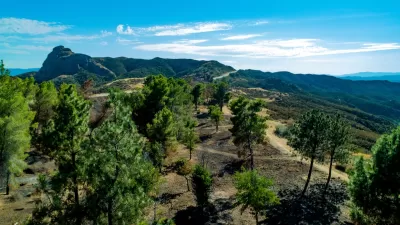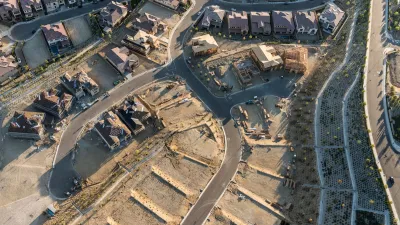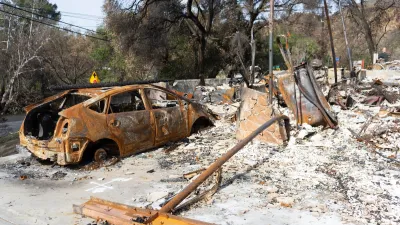Effective wildfire mitigation in California requires a holistic approach that goes beyond large-scale vegetation removal, emphasizing home hardening, defensible space, strategic planning, and reducing human-caused ignitions.

The January 2025 Los Angeles wildfires devastated the region, destroying over 10,000 homes and resulting in more than two dozen fatalities. In response, some have proposed solutions like the "Fix Our Forests Act," which may inadvertently harm California's unique ecosystems without effectively addressing the root causes of such fires. A prevalent misconception is that large-scale vegetation clearing can mitigate wildfire risks; however, experts argue that this approach oversimplifies the complex nature of wildfires in California's diverse ecosystems. Effective solutions require multifaceted, region-specific strategies that consider ecological nuances and emphasize improved urban planning.
California's ecosystems, including mixed conifer forests, oak woodlands, and shrublands, each have distinct fire regimes characterized by variations in frequency, timing, size, and intensity. In Southern California, native shrublands like chaparral and sage scrub are adapted to infrequent, high-intensity fires occurring every 30 to 100 years. Historically, these areas experienced low lightning strike frequencies, resulting in fewer natural ignitions. The plant species in these ecosystems possess adaptations such as fire-induced seed germination and resprouting, enabling rapid recovery after intense fires. However, excessive disturbances, including frequent fires, can negatively impact these ecosystems, underscoring the importance of tailored fire management strategies.
While fuel modification can be beneficial in specific contexts, such as creating defensible space around structures and establishing strategic fuel breaks to aid firefighting efforts, it is not a panacea. During extreme wind events, like those driven by Santa Ana winds, embers can travel significant distances, igniting structures regardless of nearby vegetation management. Therefore, experts advocate for a comprehensive approach to wildfire risk mitigation that includes home hardening, maintaining defensible space, thoughtful community and infrastructure planning, and reducing human-caused ignitions. This holistic strategy aims to enhance community resilience while preserving the ecological integrity of California's diverse landscapes.
FULL STORY: Expert Perspective: Wildland Fuels Management Would Not Have Saved Us from the January 2025 LA Fires

Alabama: Trump Terminates Settlements for Black Communities Harmed By Raw Sewage
Trump deemed the landmark civil rights agreement “illegal DEI and environmental justice policy.”

Planetizen Federal Action Tracker
A weekly monitor of how Trump’s orders and actions are impacting planners and planning in America.

How Atlanta Built 7,000 Housing Units in 3 Years
The city’s comprehensive, neighborhood-focused housing strategy focuses on identifying properties and land that can be repurposed for housing and encouraging development in underserved neighborhoods.

In Both Crashes and Crime, Public Transportation is Far Safer than Driving
Contrary to popular assumptions, public transportation has far lower crash and crime rates than automobile travel. For safer communities, improve and encourage transit travel.

Report: Zoning Reforms Should Complement Nashville’s Ambitious Transit Plan
Without reform, restrictive zoning codes will limit the impact of the city’s planned transit expansion and could exclude some of the residents who depend on transit the most.

Judge Orders Release of Frozen IRA, IIJA Funding
The decision is a victory for environmental groups who charged that freezing funds for critical infrastructure and disaster response programs caused “real and irreparable harm” to communities.
Urban Design for Planners 1: Software Tools
This six-course series explores essential urban design concepts using open source software and equips planners with the tools they need to participate fully in the urban design process.
Planning for Universal Design
Learn the tools for implementing Universal Design in planning regulations.
Jessamine County Fiscal Court
Caltrans
Institute for Housing and Urban Development Studies (IHS)
City of Grandview
Harvard GSD Executive Education
Toledo-Lucas County Plan Commissions
Salt Lake City
NYU Wagner Graduate School of Public Service





























